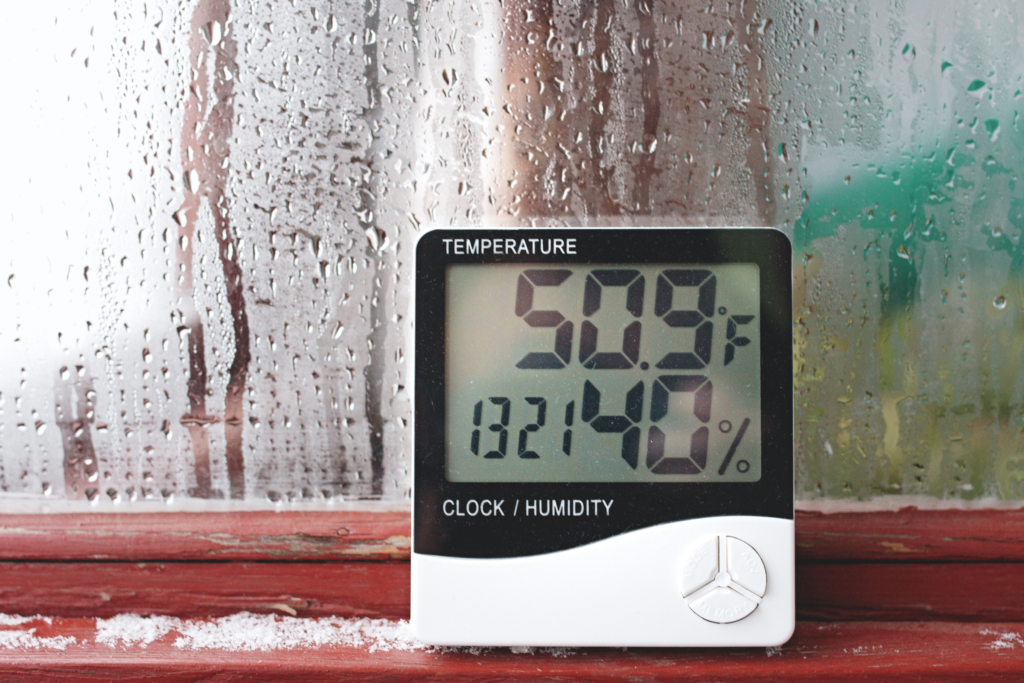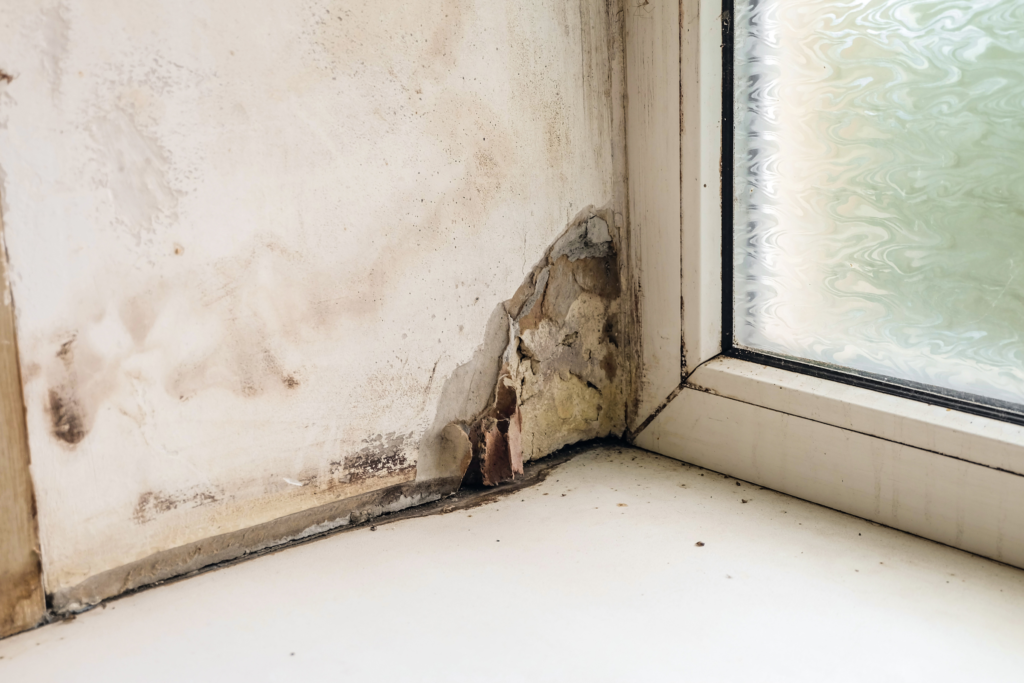How to Stop a Toilet Bowl from Sweating: 4 Quick and Easy Solutions
A sweating toilet can definitely be a cause for concern whether it is the tank, bowl, or other areas. Not only does it look bad, but all that sweaty condensation has to go somewhere which usually means that your floor gets wet. Plus, water and metal screws and bolts don’t mix – a sweaty toilet is a recipe for rust and future problems.
The most common reasons for a sweating toilet are increased indoor humidity and or excessively cold water filling up your toilet tank. One or both of these issues will create the conditions necessary to produce condensation on the outside of the toilet bowl and tank. Fortunately, both of these issues can be correctly.
Let’s take a closer look at the issues surrounding sweaty toilets, the best sweating toilet tank remedy that I know, and some other practical tips for taking good care of the porcelain throne!
Most Common Reasons for Toilet Tank and Bowls Sweating
To understand how to stop your toilet tank from sweating, it’s important to know what causes it in the first place. Essentially, the warm, moist air in your bathroom comes into contact with the cold surface of the toilet tank, leading to condensation. Therefore, the key to addressing this issue is by controlling the humidity levels and balancing the temperature in your bathroom.
Let’s take a closer look at those two issues:
- Excess humidity in the bathroom
- Excessively cold water in the toilet tank

Excess humidity in the bathroom
The humidity level in your bathroom directly affects the amount of condensation on your toilet tank and bowl. High humidity levels, often caused by activities such as hot showers and baths, generate more moisture in the air. This moist air, when in contact with the cold surfaces of your toilet, causes more sweat.
If you live in an area with excessive outdoor humidity, air entering the house through open doors and windows will also increase the relative humidity inside the house.
To minimize toilet sweating, consider taking the following steps:
- Use a vent fan while taking a shower or bath, and leave it on for 10-15 minutes after you finish.
- Use a dehumidifier or air conditioner to reduce the humidity level in your bathroom and other areas of the house.
- Keep the bathroom door open when not in use to improve air circulation.

Excessively cold water in the toilet tank
The temperature of the water flowing into your toilet tank can also contribute to toilet sweating. When cold water fills the tank, it lowers the surface temperature of the tank and bowl. In a warm, humid bathroom, this temperature difference increases the likelihood of condensation. To address this issue, you can:
- Insulate your toilet tank to minimize temperature fluctuations.
- Install an anti-sweat valve, which preheats the water flowing into your toilet tank, reducing the chances of condensation.
By understanding the causes of your toilet tank and bowl sweating, you can take the necessary steps to prevent it, making your bathroom experience more comfortable and dry.
How to Stop a Toilet Tank or Bowl from Sweating
Toilet tanks and bowls can sweat due to excess humidity and temperature fluctuations in the bathroom.
In this section, we’ll cover several methods to stop this issue, making your bathroom more comfortable and preventing water damage:
- Insulating the tank interior with foam
- Install an antisweat valve to increase the water temperature
- Dehumidifiers and air conditioning
- Proper ventilation
Insulating the tank interior with foam
Probably the cheapest and most effective option for chronic condensation issues is a DIY solution that uses adhesive foam to insulate the toilet tank yourself.
Here’s how:
- Measure the dimensions of your toilet tank to determine the size of the foam pieces needed.
- Purchase adhesive foam from a hardware store or online retailer.
- Cut the foam to the appropriate size, and apply it to the inside walls of the tank.
As for the insulation material itself, here is an option that should work!

Install an antisweat valve to increase water temperature
Another method to reduce toilet sweating is by adjusting the water temperature entering the tank. Installing an anti sweat valve for toilets can help achieve this. The valve mixes hot and cold water to match the surrounding air temperature, reducing condensation.
The biggest problem with this solution is that you’ll need ready access to both hot and cold water to feed into the valve. Most people will find that there is only a cold water outlet near their toilet and they would have to make a significant change to their bathroom plumbing for this method to work.
While it is possible to install these yourself, it might be best to consult a professional plumber for this job to make sure you don’t mess it up!
Dehumidifiers and air conditioning
Reducing humidity in the bathroom can also help prevent toilet tank sweating. Consider the following options:
- Dehumidifiers: Use a dehumidifier in the bathroom to reduce moisture in the air. A whole-house dehumidifier can also be an effective solution, especially if you are dealing with humidity issues in other areas of your home.
- Air Conditioning: Running your air conditioner can lower the humidity in your home, including your bathroom. Keep your air conditioning set to a comfortable temperature during hot and humid months.

Proper ventilation
Finally, make sure your bathroom has proper ventilation to create an environment less prone to condensation:
- Exhaust Fan: Always use the exhaust fan during and after showers for at least 10-15 minutes. This will help remove excess moisture from the bathroom.
- Open Windows: If possible, open windows to improve air circulation and allow fresh air to enter the bathroom, further reducing humidity. Skip this step if it is super humid outside!
By following these steps, you’ll be able to effectively prevent toilet tank and bowl sweating, making your bathroom more comfortable and less susceptible to water damage.
Other Common Water-Related Issues with Toilet Tanks and Bowls
Now that we’ve tackled the main topic, let’s consider a couple of other common water-related issues with your toilet that you might want to check while you are stopping the sweat!
Leakage and Loose Connections – check the flapper!
Leakage is a common issue that can arise in toilet tanks and bowls. You should check the connections between the bowl, tank, and water supply line for any signs of leakage. Make sure the nuts and compression rings are properly tightened.
If there is water pooling around the base of your toilet, it is possible that the issue lies with the sink, nut, or compression ring. To fix this, consider turning off the main water supply and using a wrench to tighten any loose connections. If necessary, apply pipe joint compound to ensure a watertight seal.
It’s also common for loose connections to occur, sometimes leading to a running toilet or leaks within the tank itself. Inspect the chain, flapper, and fill valve to ensure they are properly connected and functioning. If you see any disconnected parts or worn-out components, make sure to repair or replace them.
Mildew and Mold on Drywall
Another issue that may arise from water-related problems in toilet tanks and bowls is the growth of mildew and mold on your drywall. Mold thrives in moist environments and can cause damage to your walls and paint, as well as create potential health hazards.
Here are some steps to prevent and tackle mildew and mold issues:
- Ensure proper ventilation: Install an exhaust fan or open a window to increase air circulation in your bathroom. This helps reduce humidity levels and keep surfaces dry.
- Regulate indoor temperature: Keep your air conditioning unit at a consistent temperature to prevent fluctuations in humidity levels. This will make it less likely for condensation to form on walls and other surfaces.
- Clean and check for mold regularly: Be proactive in cleaning the surfaces in your bathroom, especially around the toilet and sink. By doing so, you can quickly identify and address any mold growth before it becomes a bigger issue.
By addressing these common water-related issues with your toilet tank and bowl, you will maintain a safe, efficient, and clean bathroom environment.

Other Things to Consider for Household Moisture Issues
Why stop there! Let’s take a look at a couple more areas in the bathroom to ensure that we won’t have ANY problems with water damage or long-term issues!
Addressing Shower and Sink Areas
When dealing with moisture issues in your home, pay special attention to your shower and sink areas. These are common sources of excess moisture.
Make sure you:
- Use an exhaust fan while taking showers, and keep it running for 10-15 minutes after finishing to help circulate air and remove humidity.
- Wipe down shower walls and tubs after use to minimize the amount of water evaporating into the air.
- Regularly check for any leaks around sinks and faucets, and fix them promptly.
- Close bathroom windows on hot, humid days to prevent additional moisture from entering the room.
Improving Flooring and Walls
Moisture can also affect your flooring and walls, making it essential to take steps to improve these surfaces in your home:
- Choose water-resistant flooring materials for high-moisture areas like bathrooms and kitchens. Options include tile, linoleum, or waterproof laminate.
- Inspect your drywall for signs of dampness, mold, or mildew. If you find moisture damage, it’s important to dry out the affected areas and repair or replace the damaged drywall.
- Consider investing in moisture-resistant drywall or wall paneling specifically designed for damp environments, such as greenboard or cement board.
- Seal and protect your floors and walls with appropriate sealants designed for high-humidity areas, like silicone or polyurethane coatings.
By taking these steps to address moisture issues around your shower, sink, flooring, and walls, you’ll be better equipped to keep your home comfortable and reduce the likelihood of a sweating toilet bowl.
Let Us Know How We’re Doing!
Did this expertly prepared resource answer your question?
Do you have another question about home maintenance, home improvement projects, home appliance repair, or something else?
Get more information, send in questions and keep the discussion going by contacting the I’ll Just Fix It Myself company customer service team at at 1-800-928-1490 or Email us at [email protected]
